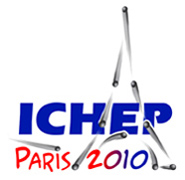Speaker
Dr
Beijiang Liu
(Institute of High Energy Phsics (CAS) and Hong Kong University)
Description
There has been much arguments on whether sigma and kappa exist, due to the facts that the total phase shifts in the lower mass region are much less than 180 degrees and they do not fit into ordinary meson nonets; also whether f0(980) and a0(980) are part of the ground-state quark-antiquark family or whether they are 4-quark states, hybrids or K Kbar molecules. The study of their nature has been one of the important topics in the light hadron spectroscopy.
The mixing intensity of f0(980) and a0(980) is expected to shed light on the nature of these two resonances. The a0-f0 mixing intensity has been predicted to be in the range of 0.01 to 0.2 by various theoretical models, but no any experimental results are available yet. The transition of f0(980) to a0(980) or a0(980) to f0(980) will provide complementary constraints to the parameters of a0 and f0 mesons. Using the samples of 2.26 X 10^8 J/Psi events and 1.06 X 10^8 psi' events collected with the BESIII detector, we perform direct measurements of a0-f0 mixing via the isospin breaking processes J/psi->phi f0->phi a0 and chi_c1->pi0 a0 ->pi0 f0. The preliminary results on the a0(980)-f0(980) mixing intensity are presented.
Evidence for neutral kappa firstly comes from re-analysis of the old Kpi scattering data and then the production decay processes including D -> K pi pi, J/Psi -> K* K pi, etc.. Because of the isospin symmetry, a charged kappa is expected. We report the charged kappa in J/psi-> K Ks pi pi decays, based on 5.8 X 10^7 J/Psi events collected by BESII. The charged kappa particle is found as a low mass enhancement in the invariant mass spectrum of K pi. If a Breit-Wigner function of constant width is used to parameterize the kappa, its pole locates at (849 +- 77+18-14) -i (256 +- 40 +46-22) MeV/c2, which is consistent with that for neutral kappa.




